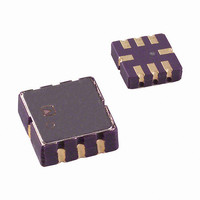ADXL103CE Analog Devices Inc, ADXL103CE Datasheet - Page 9

ADXL103CE
Manufacturer Part Number
ADXL103CE
Description
IC ACCELEROMETER SNGL-AXIS 8CLCC
Manufacturer
Analog Devices Inc
Series
iMEMS®r
Specifications of ADXL103CE
Acceleration Range
±1.7g
Axis
X or Y
Sensitivity
1000mV/g
Voltage - Supply
3 V ~ 6 V
Output Type
Analog
Bandwidth
1Hz ~ 500Hz Selectable
Mounting Type
Surface Mount
Package / Case
8-CLCC
No. Of Axes
1
Sensor Case Style
LCC
No. Of Pins
8
Supply Voltage Range
3V To 6V
Operating Temperature Range
-40°C To +125°C
Msl
MSL 1 - Unlimited
Sensitivity Per Axis
1000mV / G
Svhc
No
Rohs Compliant
Yes
Lead Free Status / RoHS Status
Lead free / RoHS Compliant
Interface
-
Lead Free Status / RoHS Status
Lead free / RoHS Compliant, Lead free / RoHS Compliant
Available stocks
Company
Part Number
Manufacturer
Quantity
Price
Company:
Part Number:
ADXL103CE
Manufacturer:
QUALCOMM
Quantity:
2
Company:
Part Number:
ADXL103CE
Manufacturer:
AD
Quantity:
4 130
Part Number:
ADXL103CE
Manufacturer:
ADI/亚德诺
Quantity:
20 000
Part Number:
ADXL103CE-REEL
Manufacturer:
ADI/亚德诺
Quantity:
20 000
Company:
Part Number:
ADXL103CEREEL
Manufacturer:
VISHAY
Quantity:
4 366
THEORY OF OPERATION
The ADXL103/ADXL203 are complete acceleration measure-
ment systems on a single, monolithic IC. The ADXL103 is a
single-axis accelerometer, and the ADXL203 is a dual-axis
accelerometer. Both parts contain a polysilicon surface-
micromachined sensor and signal conditioning circuitry to
implement an open-loop acceleration measurement architecture.
The output signals are analog voltages proportional to acceleration.
The ADXL103/ADXL203 are capable of measuring both positive
and negative accelerations to at least ±1.7 g. The accelerometer
can measure static acceleration forces such as gravity, allowing
it to be used as a tilt sensor.
The sensor is a surface-micromachined polysilicon structure
built on top of the silicon wafer. Polysilicon springs suspend the
structure over the surface of the wafer and provide a resistance
against acceleration forces. Deflection of the structure is measured
using a differential capacitor that consists of independent fixed
plates and plates attached to the moving mass. The fixed plates
are driven by 180° out-of-phase square waves. Acceleration deflects
the beam and unbalances the differential capacitor, resulting in
an output square wave whose amplitude is proportional to
acceleration. Phase-sensitive demodulation techniques are then
used to rectify the signal and determine the direction of the
acceleration.
X
Y
OUT
OUT
= 2.5V
= 3.5V
PIN 8
Figure 23. Output Response vs. Orientation
(Not to Scale)
X
Y
X
Y
TOP VIEW
OUT
OUT
OUT
OUT
Rev. C | Page 9 of 12
PIN 8
PIN 8
= 1.5V
= 2.5V
= 3.5V
= 2.5V
The output of the demodulator is amplified and brought off-chip
through a 32 kΩ resistor. At this point, the user can set the
signal bandwidth of the device by adding a capacitor. This
filtering improves measurement resolution and helps prevent
aliasing.
PERFORMANCE
Rather than using additional temperature compensation circuitry,
innovative design techniques have been used to ensure that high
performance is built in. As a result, there is essentially no
quantization error or non-monotonic behavior, and temperature
hysteresis is very low (typically less than 10 mg over the −40°C
to +125°C temperature range).
Figure 11 shows the 0 g output performance of eight parts
(x and y axes) over a −40°C to +125°C temperature range.
Figure 14 demonstrates the typical sensitivity shift over
temperature for V
V
typically better than ±1% over temperature at V
S
= 5 V but is still very good over the specified range; it is
PIN 8
X
Y
EARTH'S SURFACE
OUT
OUT
= 2.5V
= 1.5V
X
Y
OUT
OUT
S
= 2.5V
= 2.5V
= 5 V. Sensitivity stability is optimized for
ADXL103/ADXL203
S
= 3 V.













